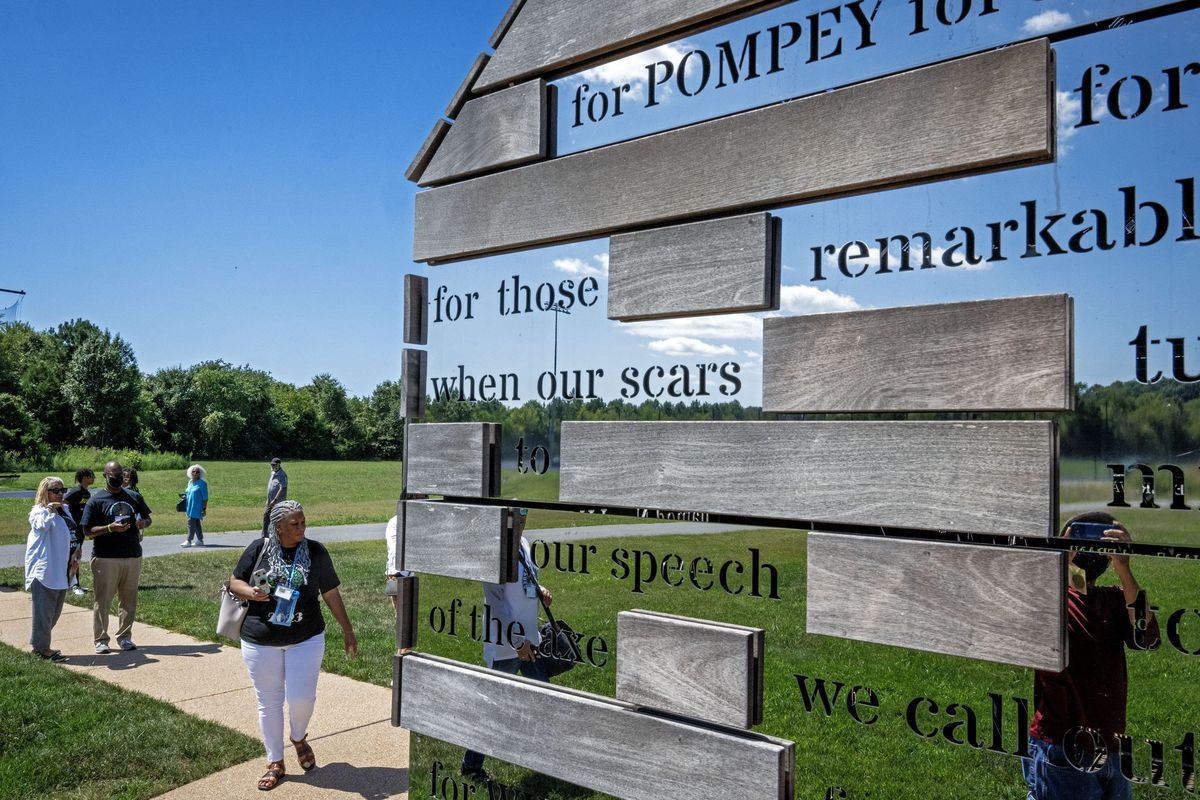Georgetown sold their ancestors. They just had a historic family reunion.

For decades, Julie Hawkins Ennis never questioned her family story. The 55-year-old knew she was born and raised in Southern Maryland, just like her grandparents. Her family tree connects to St. Mary’s County’s earliest European settlers as well as the Native Americans who first occupied the land.
Efforts years ago to trace her genealogy through Ancestry.com only affirmed her beliefs – until a man distantly related to her reached out through the site, suggesting her family may have actually migrated from the Southern United States, as many Black Americans did during the Great Migration. She was put off by the notion.
“All of us from Southern Maryland know that, growing up, we say: ‘No, we’re from here,’ ” Hawkins Ennis recalled. “And we say it with pride.”
But Hawkins Ennis’s confidence in her family’s history faltered in 2016, when it first became widely known that a group of 272 people enslaved by Maryland’s Jesuit priests were sold in 1838 to help save Georgetown University, which back then was a young college on the cusp of financial disaster. To settle the school’s debts, Maryland Jesuits sold the enslaved people to plantations in Louisiana while others remained behind.
Her ancestors, she would later learn, were among that group – and they had in fact been brought to Louisiana.
“My family was good at history, we used to hear all kinds of stories – we never heard once about Jesuits enslaving people and selling them,” Hawkins Ennis said. “And at the Catholic school that I went to, not once did we hear about Jesuits enslaving us.”
On Saturday, Hawkins Ennis was one of more than 150 descendants of the group sold by Jesuits – known as the GU272 – gathered at St. Mary’s College for what organizers said was a first-of-its-kind family reunion.
She’s a leading member of the Southern Maryland Descendant Gatherings Committee, which in April became one of the first beneficiaries of a reconciliation fund created by Georgetown University in response to a 2019 student referendum that called on the school to financially support descendant communities.
The committee will receive $400,000 this year for genealogical projects and efforts to build community among the GU272 descendants, including over Labor Day weekend, when hundreds of them were able visit their ancestors’ former plantation sites and other areas of importance in Maryland. Attendees mostly say they found one another, or learned about the effort, through Ancestry.com and social media.
“We have all been separated, and now we want to come back together,” said Henrietta Vines Pike, another member of the gathering committee. “We all have a strong sense of faith. And if you remember all the Catholicism that has gone into our lives, we have a strong sense of family too.”
Saturday’s event might as well have been one big family reunion. Attendees traveled to St. Mary’s County from as far away as Louisiana and New York. They wore matching T-shirts, embraced and shared laughs even when meeting in-person for the first time. On their name tags, GU272 descendants included surnames from the enslaved by Jesuits that appear in their own family tree – like Barnes, Yorkshire, Hawkins and Campbell – in hopes of finding new possible connections at the event.
They lovingly refer to their fellow descendants as “cousins” even if they do not share a common ancestor. And later in the day, they sat down for a classic reunion meal: fried chicken, with all the fixings.
“All I knew was Maryland, Virginia. That was the furthest south we went,” Bernadette Semple, 60, said. “But when I did [Ancestry.com], I started getting people from Louisiana. I was like, ‘Where is that coming from?’ ”
Semple’s story mirrors many others. The New York City native was told the majority of her life that her family’s roots were confined to the D.C. region. Now, her extended family seems to be growing by the day.
“I had no idea I had all these cousins,” she said with a smile.
Wenda Brown, 57, proudly shared Saturday that she’s a direct descendant of an enslaved man named Frank Campbell who was transported to Louisiana. She credits Ancestry.com for opening up a new window into her family’s past. But learning the truth, she said, was painful.
“Our history has ebbs and flows – it can be like barbed wire,” she added. “But it’s all part of who we are.”
Georgetown University professor Adam Rothman, the curator of Georgetown’s slavery archive, was present. He said that the university’s records contain material about those who were enslaved by the Maryland Jesuits – those sent to Louisiana against their will and those who remained behind. Rothman said that the archives have been useful to descendants trying to explore their family’s history.
But he called the records “lopsided,” at best. Out of thousands of pages of material, Rothman said, Georgetown’s archives contain just one piece of paper written by someone who was enslaved by the Maryland Jesuits: a letter from a man named Thomas Brown, who was petitioning to purchase his own freedom. Rothman vowed to flesh out the historical record, and he hoped those in attendance could help tell what happened to the GU272 descendants.
“How do we fill the historical record with more complete truth?” Rothman asked. “The research you all have done to piece these things together, that’s how we tell the full truth of this history.”